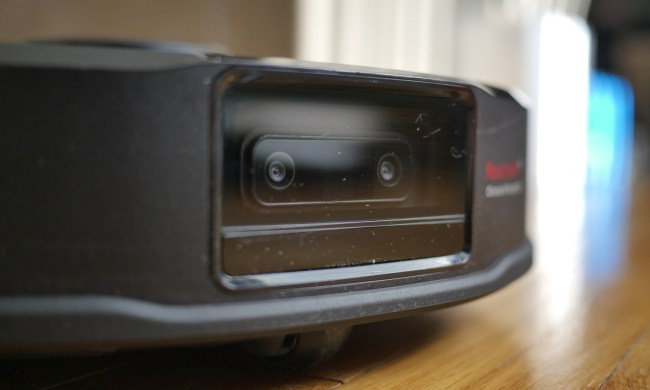The theory is that doing another Fitbit-like tracker is worse than played out and it won’t improve performance as quickly as having someone (or something) that’s better (or faster) than you. Florent Imbert, executive creative director for JWT New York told Fast Company, “Running against an invisible clock will never be as motivating as running against someone — or something.”
The introduction video published by Puma on April 29 makes a good point: competition is a fantastic motivator, and BeatBot is exactly that — a visual target (in this case, a bot) to beat, instead of simply running against the clock.
BeatBot follows lines, which makes it perfect for track running. It uses nine infrared sensors and an Arduino platform for navigation. Rear LEDs keep it visible, and GoPro action cams mounted fore and aft record the run for later review. It’s self-driving and is programmed via a handy app. Enter the distance and the time to beat, and place the robot on a line. The app records times, so the bot can be programmed to run old records or other people’s records — like Usain Bolt’s, for example.
The bot determines speed and distance traveled by measuring wheel revolutions to recreate the pace of a given record. It may look like a shoe box with RC car wheels, but it’s fast as Usain Bolt, World Record holder for the 100 meter sprint with a time of 9.58 seconds (that’s 44 km an hour). As far as beating Bolt’s world record, the fastest man alive’s words were, “Good luck with that.”
BeatBot’s speed proved to be the tricky part of the design. While line-following robots are pretty common, keeping it on track through a turn at that speed proved a challenge. Imbert said, “We went through over eight prototypes … We even enlisted the expertise of a NASA robotics engineer and three MIT grads.”
The downside: it’s not available to the public. The cost of the current model is so high it’s only available to Puma athletes, teams, and other special people. But as Imbert said, “The plan is always to develop new models, products and ideas to inspire every athlete.” Perhaps someone who sees this will be inspired to make their own pacing bot.


